This review was provided for free using a demo bike from Vintage Iron in Vancouver Canada. My goal is to be transparent and unbiased with you, this video and writeup are not meant to be an endorsement of Vintage Electric products. I welcome your corrections, additions, and feedback in the comments below, and the Vintage electric bike forums.
Observations:
- The Scrambler is part of the 72 Volt Performance Series of products from Vintage Electric Bikes. The frame, battery, controller, motor, and much of the hardware is the same as what you’d get on the Roadster or Shelby models. The scrambler comes with knobby tires for improved traction off-road, a mesh grill over the headlight for improved durability, and a yellow headlight vs. white on the other two.
Pros:
- Incredible aesthetic, these are some of the coolest looking electric bikes I’ve had the opportunity to ride. The hydroformed frame tubing, custom paint and designs, custom battery box, and motorcycle inspired headlight match perfectly and really set Vintage apart from others.
- the bike feels solid, and the inverted suspension fork makes it extremely comfortable. There’s no vibration or jarring feeling on this bike like many others. I think the increased weight is part of what makes it comfortable. Note that you can upgrade the rigid seat post to a suspension post for even more comfort.
- It’s extremely quiet, because the gearless direct drive motor does not have any gears rubbing inside. It’s larger and heavier than a planetary geared motor, but I believe these are more reliable, and you get regenerative braking!
- Unlike most of the other moped and motorcycle inspired electric bicycles I see, this one has a traditional bicycle saddle with adjustable height seat post. That means you can pedal more comfortably. I love the handlebar they chose, and noticed that you can rotate down or up to suite your hand position. The bar can even be changed out if you prefer a cruiser or chopper bar like their Tracker Classic has.
- Excellent touch points. The saddle is very comfortable, the grips are thick and feel solid (since they are locking), and even the pedals worked well… though they are not as wide as something like the Wellgo BMX pedal. Consider switching to these if you have large feet and want a bigger surface area. They do come in a range of colors, and Magnesium build if you prefer to save weight.
- The company is very approachable and supportive. They will help you upgrade older models to the newest equipment and change out components to suit your needs. It’s still founder owned and operated, and he started it when he was 21 years old! Check out this episode with him and Jay Lenno from 2015.
- Depending on your location, the bike will ship as a Class 2 product with different nominal motor power rating. It’s 750 watts in the United States, 500 watts in Canada, and 250 watts in the United Kingdom. They also sell a lot in Indonesia apparently! All of them offer the same incredible 180nm of torque, which is 3x their older bikes and is very noticeable when starting from standstill. Lots of fun, very good hill climber, can support up to 300lb riders.
- For those who want extra power and speed, to use off-road or on private property, the company sells a “High Speed Key” for $150 that allows any of the 72 Volt Performance Series models to reach 40 miles per hour (64km/h). I was told that older Scrambler models (and others) can be refreshed with software tunes and battery upgrades to match the latest bikes. It seems like the company is dedicated to offering good support, and they actually offer a two year comprehensive warranty which is great!
- Compared to some of the other motorcycle inspired ebikes, this one is quite a bit lighter. I’ve seen products from ONYX, Sur Ron, Segway, and Super 73 that can weigh quite a bit more (sometimes 100lbs) and are setup more like dirt bikes than street motorcycles. I would consider the 72 Volt Scrambler to be more of a street and hybrid model than a true dirt bike.
- The pedal assist performance is very good. The Thun bottom bracket sensor measures cadence and torque, so it’s more natural feeling than just cadence. I never felt overwhelmed by pedal assist, but was always impressed by the instant power of the trigger throttle. The trigger throttle is limited by the assist level, which is probably a safety choice. In order to get full power you need to be in assist level 5.
- The hub motor still looks like it did on previous models, it’s still made with Crystalyte, but has upgraded aluminum alloy staters and torque-optimized copper winding design. For context, most other hub motor powered electric bikes I try are in the 50nm to 70nm range and this one is 180nm! It’s still silent, offers regenerative braking, and should be very durable and long lasting.
- I was amazed that the price of the 72 Volt series, including the Scrambler, is the same as it was in 2019 when I last covered it. That starts to seem like a good value with so many less powerful and less beautiful products being sold in the $4k to $5k range these days.
- In addition to the motor, the battery has also been upgraded with higher energy density cells. you get well over 1kwh of capacity for long range or high power use. The battery charger is one of the fanciest I’ve ever seen, offering 1 to 5 amp outflow (lower amp is slower but less hard on the battery cells) and you can set it to 80% fill to not stress the cells or go up to 100% if you wish.
- The bike is about four pounds less heavy than the older model (much of this has to do with the battery and motor changes). Lighter is better in most cases when it comes to electric bikes, and it makes the bike easier to lift for service and transport on car racks.
- I absolutely love the inverted suspension fork. It still offers compression and rebound adjust at the crown, but you might need a hex wrench. Inverted designs are stiffer, they look cool, and the 20mm clamped axle with wider Boost hub spacing ensures maximum strength for the spokes and wheel, which is important given the weight and potential for higher speeds here. The rear axle is 12mm thick vs. 9mm on most bicycles.
- Note the leather accents at the top portion of the fork between the double-crown mounts. These keep the tubes from marring the side of the frame when you turn sharp or park the bike (they protect against oversteer). One drawback is that the turning radius of the bike is larger, so you might need to do multi-point turns.
- Premium Promax Lucid hydraulic disc brakes offer the stopping power needed for high-speed riding and a heavier bike build. The 203 mm front rotor will do more than half of the work as weight shifts forward, and it will cool faster because of the increased surface area. The rear brake rotor is 160mm, which is smaller than expected, but keeps the rear from getting too crowded.
- When activating the brake levers, the controller system activates regenerative braking to recoup some energy. This helps to reduce speed and wear on the brake pads. The controller is designed to never overfill or damage the battery however, so you might notice regen fading out if you’re at 100% full and descending a long hill.
- The rear fender is sturdy, does not rattle when riding on rough terrain, and adds some style to the bike because it’s paint matched, it will also keep your back cleaner when going off-road! I appreciate that it’s aluminum alloy, so won’t rust if scratched a bit over time.
- Decent weight distribution, the bike may be heavy but at least the battery box is mounted low and center on the frame, this improves handling and keeps the frame stiff compared to e-bikes with rear-rack batteries.
Cons:
- Although the bike is now roughly four pounds lighter than the prior generation of non-72 volt Scramblers, it is still fairly heavy at 82lbs. This is due in part to the heavy duty inverted fork, 20mm front axle, stylized frame and battery box, high capacity battery, as well as the powerful direct drive hub motor.
- The bike costs a lot, though I was impressed that the price hasn’t really increased since 2019 when I last covered it! In addition to the base cost, you’ll need to pay $199 more for shipping, or $75 for delivery if you live in the Bay Area (near San Francisco California). You can pick it up for free by visiting the Vintage Electric headquarters in Santa Clara. The Race Mode Key costs an additional $150 if you want to unlock off-road 40mph use.
- This is a fairly minor gripe, but there are no bottle cage mounts on the frame. With traditional bicycles, you might find one on the downtube or seat tube, but that area is taken up by the custom battery box. Consider a handlebar clamp bottle holder, trunk bag with bottle holster if you get the rear rack, or a hydration backpack.
- The charging port for the battery is located on the right side of the frame, low down by the crank arm. This means you have to bend down to plug it in, and the cable could get caught or sheered off if the cranks are spun while the bike is plugged in.
- The battery charger is one of the nicest that I’ve seen, offering adjustable fill capacity (80% to 100%) and different fill rates (1amp to 5amp) but it’s fairly heavy at 2.8lbs and quite large. This makes it less portable, in my opinion.
- The battery itself is more permanently bolted to the bike frame. It’s not like some other ebikes that allow you to park the bike in one spot and charge the battery in another. This could expose the pack to extreme temperatures, and means you will have to park the bike near a charging outlet to fill it.
- The kickstand does not offer adjustable height, and it’s positioned at the center of the frame on the left side. This puts it directly in the path of the left crank, which can cause pedal lock if you back the bike up while the kickstand is deployed.
- Since the bike is a single speed, it doesn’t offer as much flexibility or support for starting and climbing, or reaching and maintaining high speeds without spinning fast. There’s a sweet spot where pedaling feels good, and you won’t need to do as much drivetrain maintenance with this setup, it’s just less enjoyable at other speeds.
- As nice as the bike looks overall, the wires are external and a bit messy at some spots. You can see them bundled up near the base of the battery box and the bottom bracket. This probably makes them easier to service and improves overall frame strength vs. internal routing. It’s nice that the bike can support up to 300lbs, that’s above average.
- The bike only comes in one frame size, the stem isn’t super adjustable (you can only swivel the handlebar), and it only comes in one color. I appreciate the adjustable height saddle, because it allows for better leg extension and comfort, but otherwise this is a single size single frame style high-step.
- The grayscale display is easy to read and its buttons are reachable, but there’s no USB charging, the battery charge level indicator isn’t as precise (just 5 bars, each representing 20%), and it’s not removable. In some ways it’s kind of basic, but it’s intuitive enough and does offer settings menu if you hold up and down. Press M to cycle main display readouts, hold up to activate lights, and hold down to activate walk mode.
- The rear light is positioned just under and behind the saddle. It’s nice to have it high up, to clear the fender and optional rack, but if you have a jacket or backpack on, it could easily hang down and block it. Keep this in mind, and note that the Scrambler uses knobby tires that do not have reflective stripes like the Roadster and Shelby. Since the bike is all black, it might not be as visible to cars and other cyclists in low light conditions.
- The gearless hub motor has a big of magnetic drag. This is the case for all of the direct drive motors I’ve covered, and it is somewhat balanced by the regeneration that you get. Note that pedaling without assist, or beyond the supported assist and throttle will be more difficult than with a geared hub motor or regular bicycle. You could hypothetically charge the battery up by pedaling, but it would be lots of work and very inefficient :)
- It would be nice if the display had a range estimator or battery percentage instead of just five squares (which each represent 20% steps and just aren’t as precise).

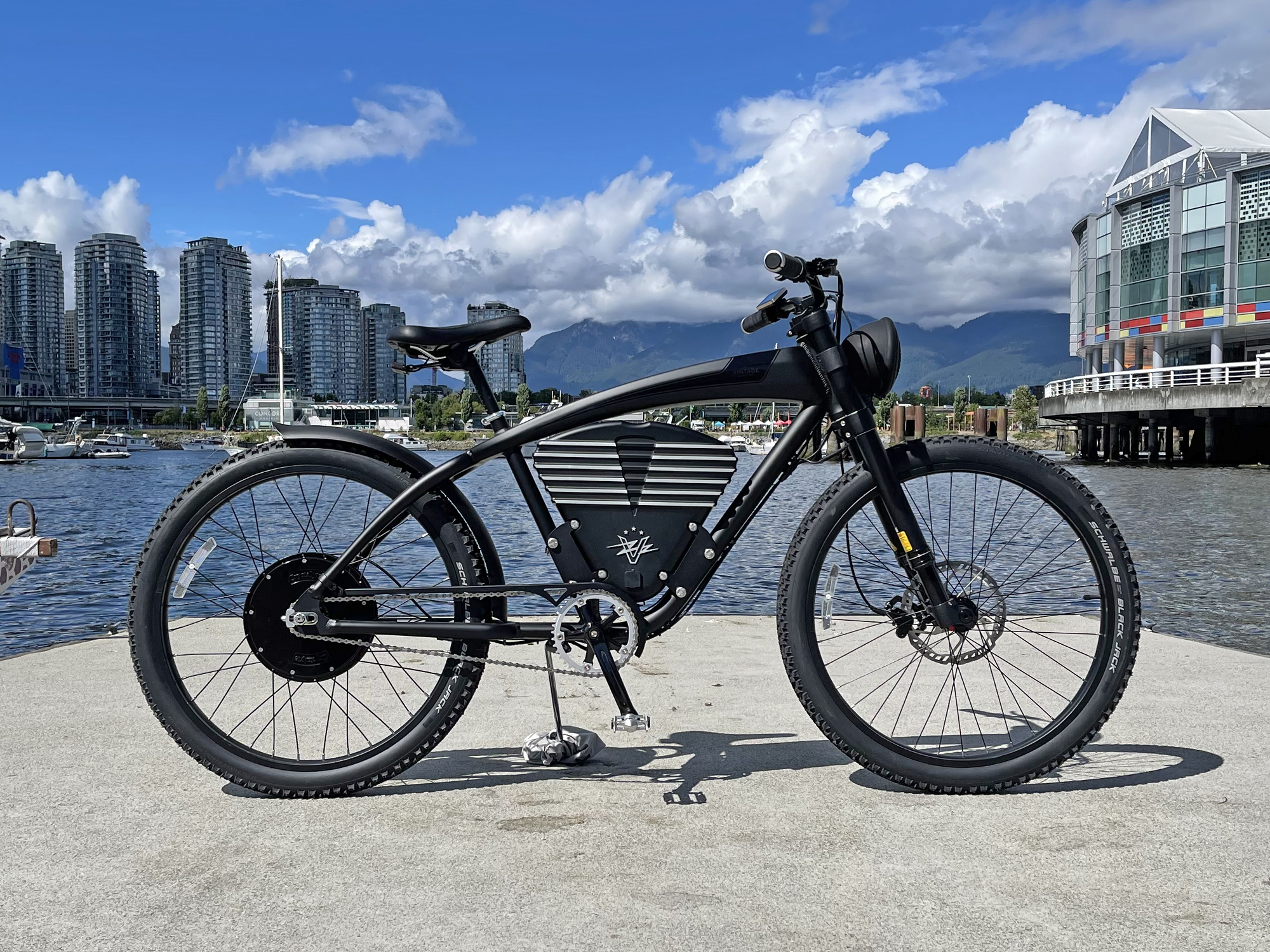

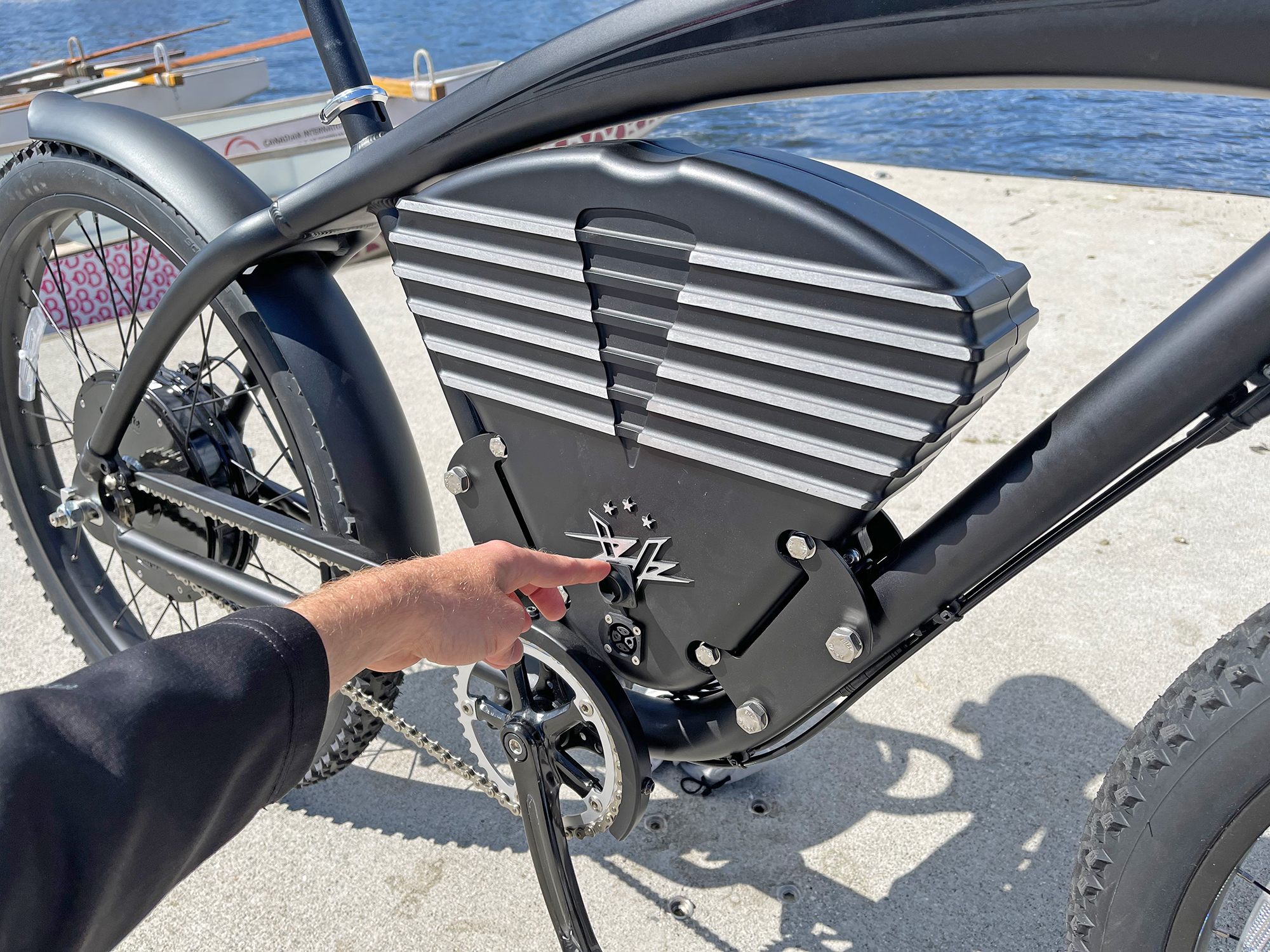
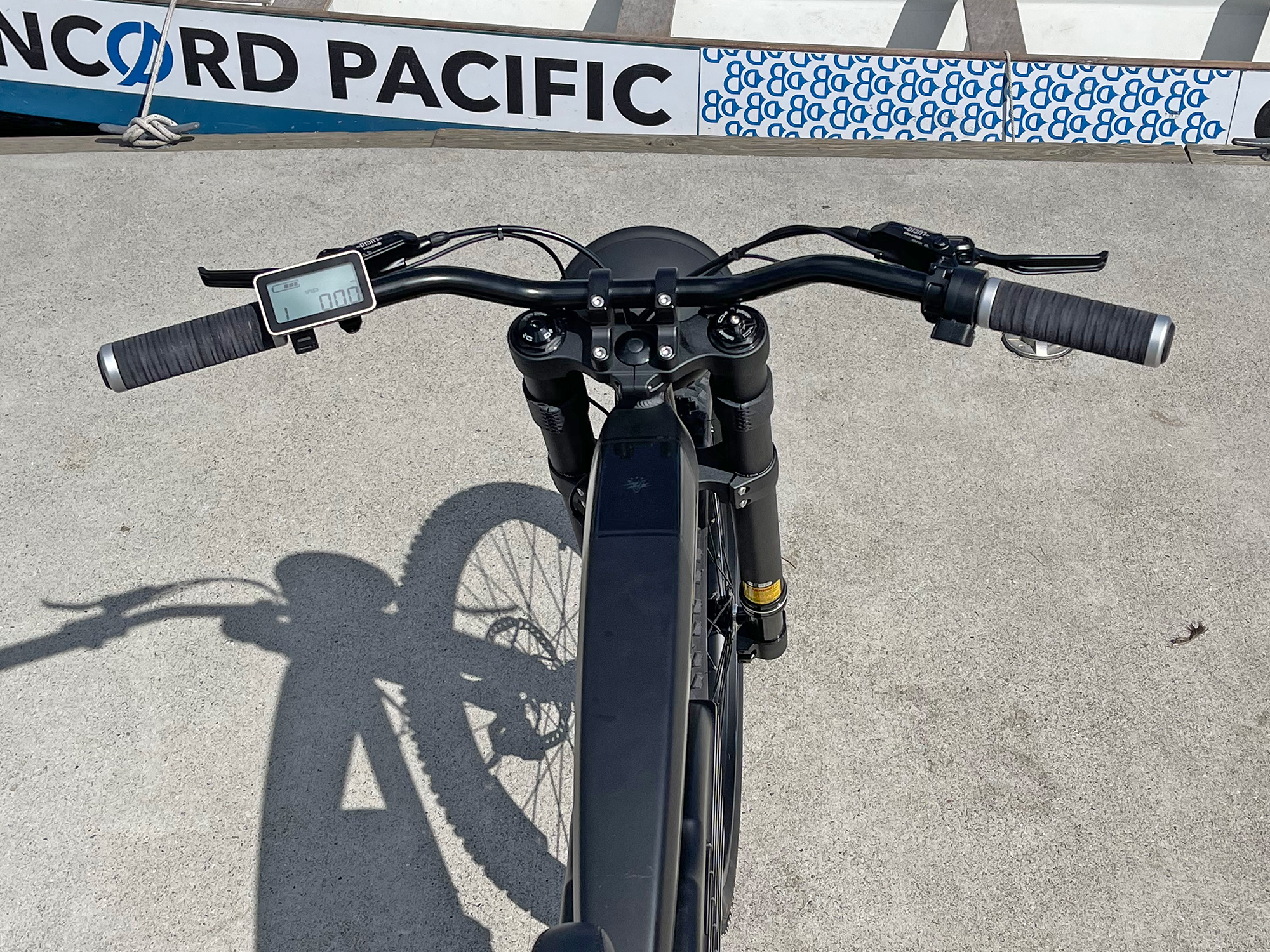
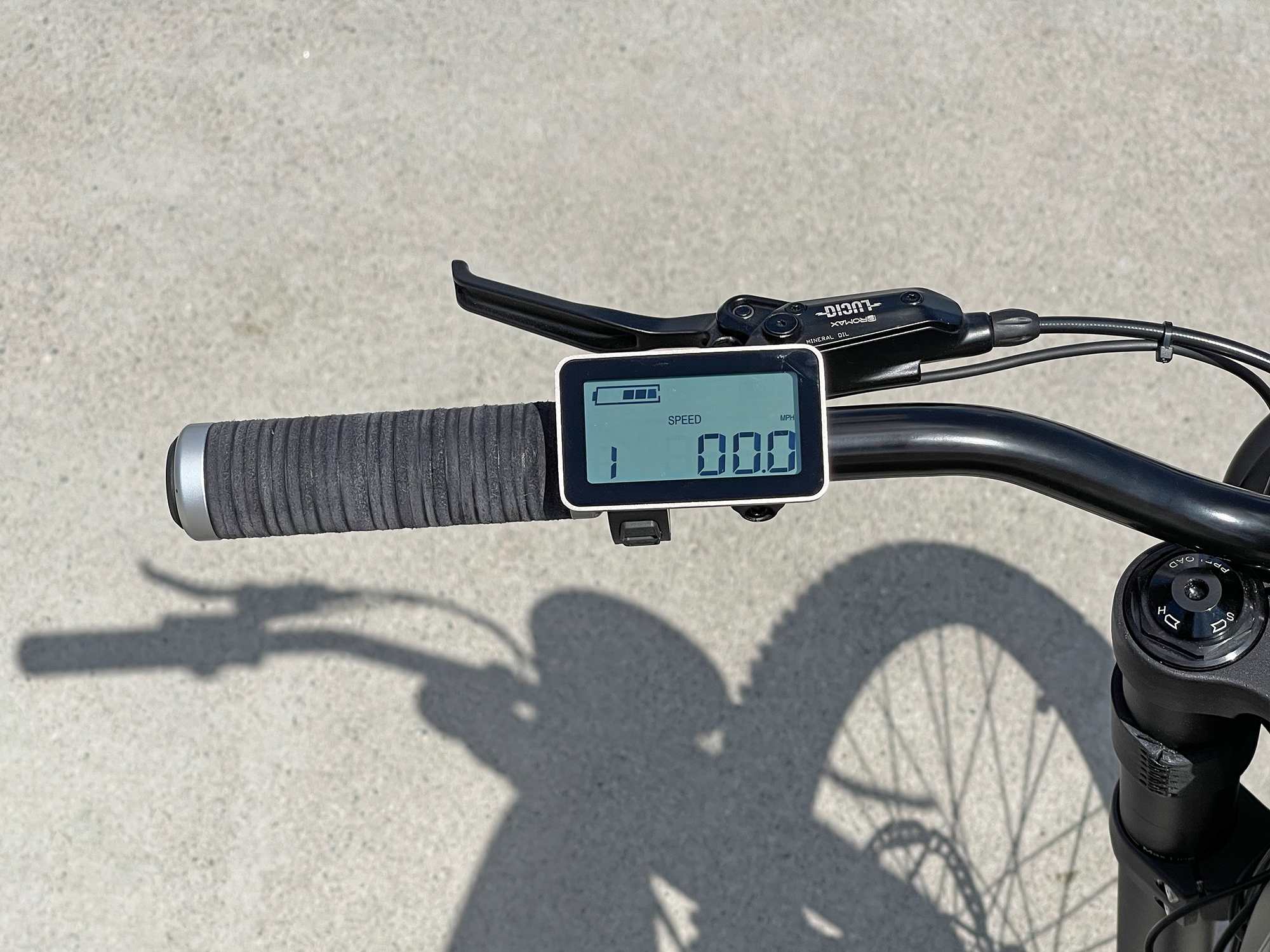

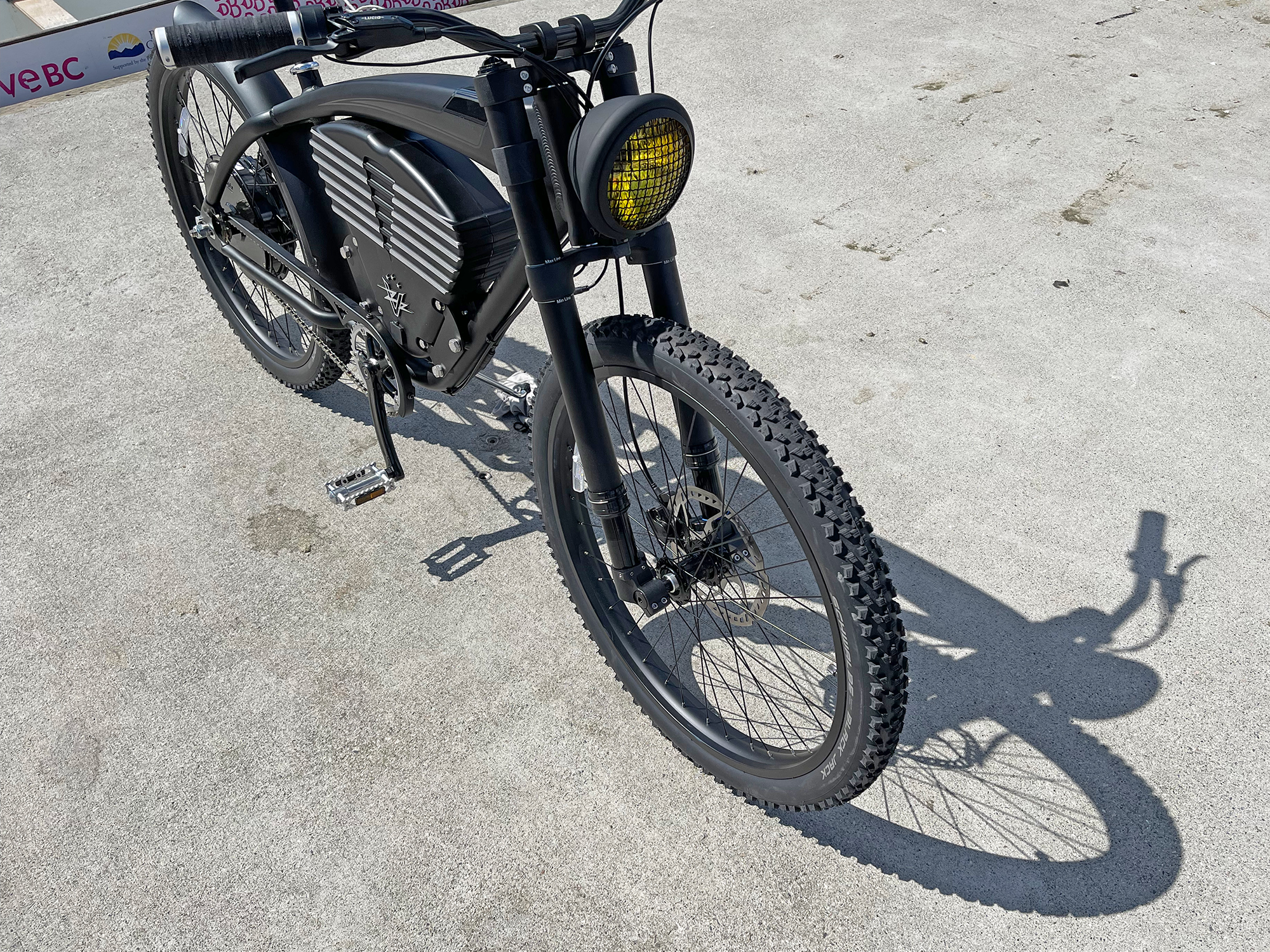
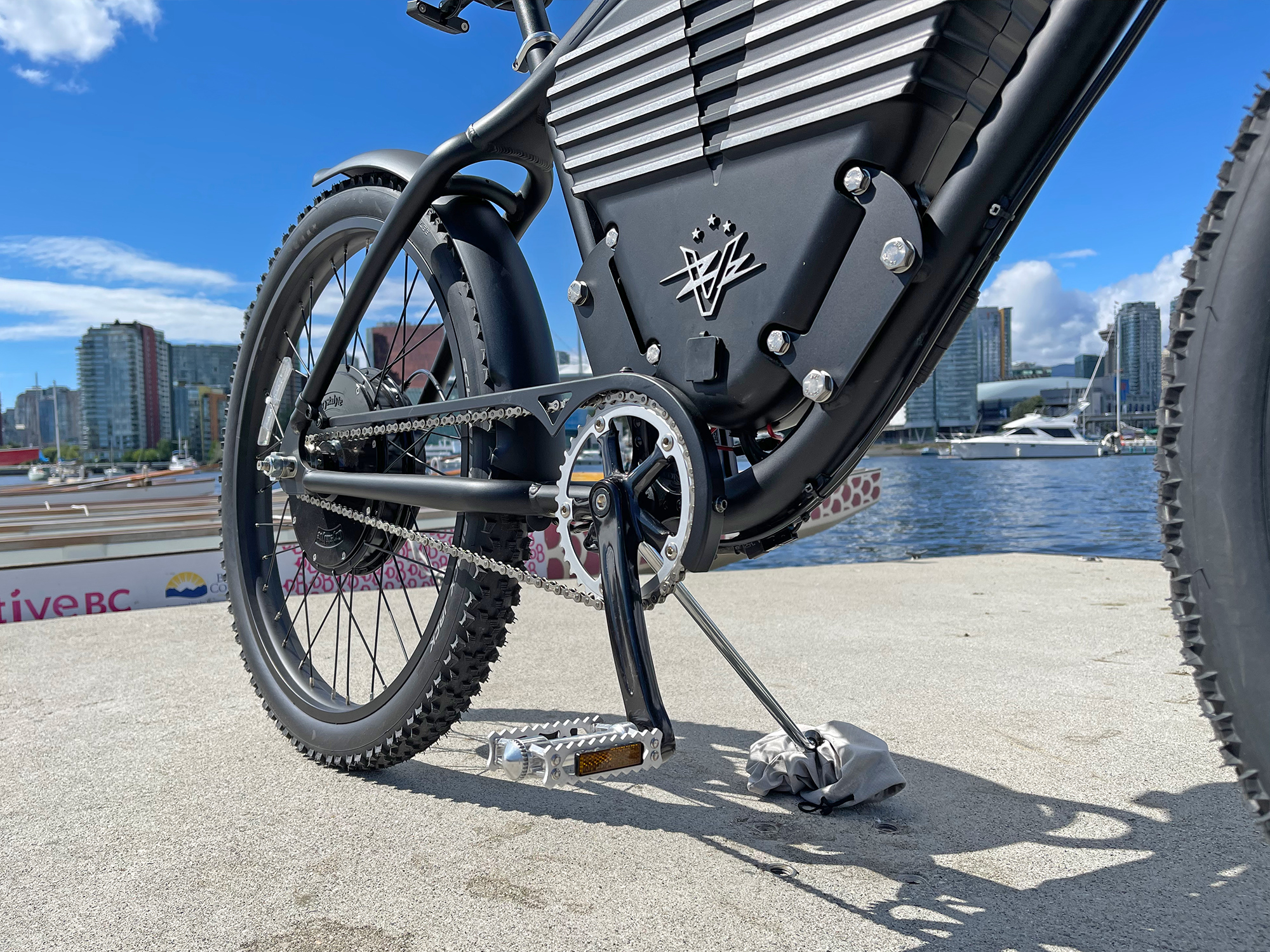
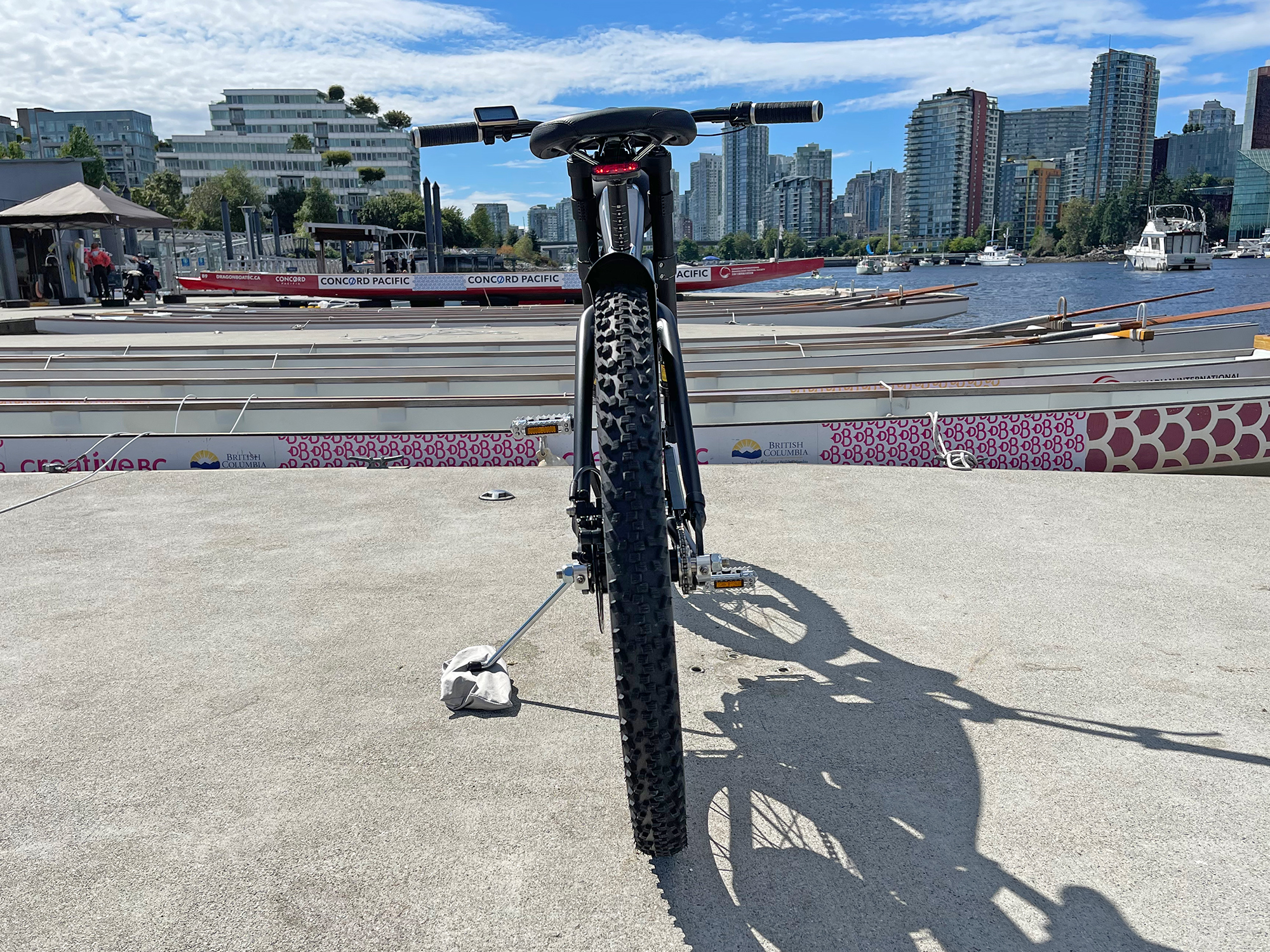
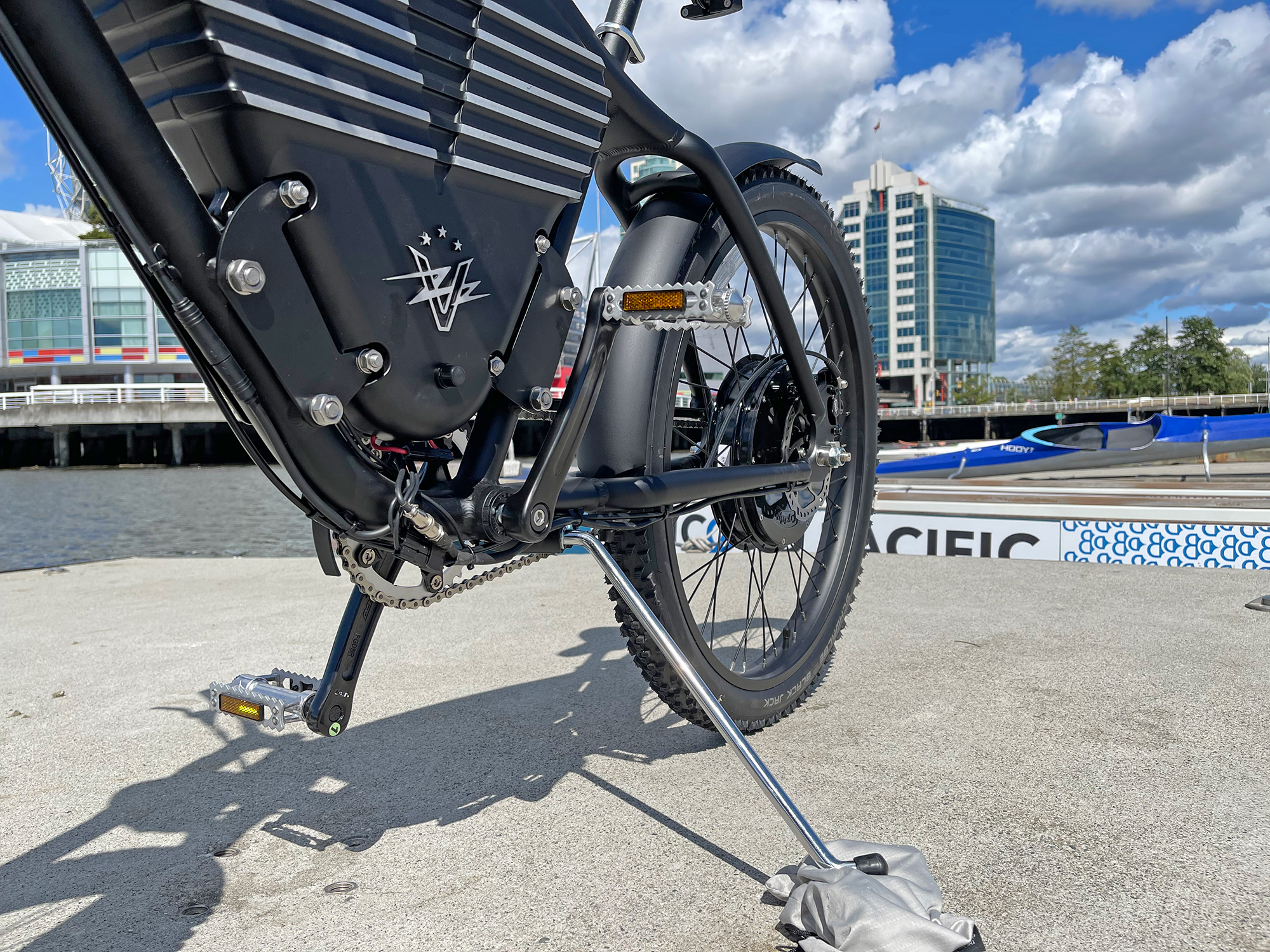
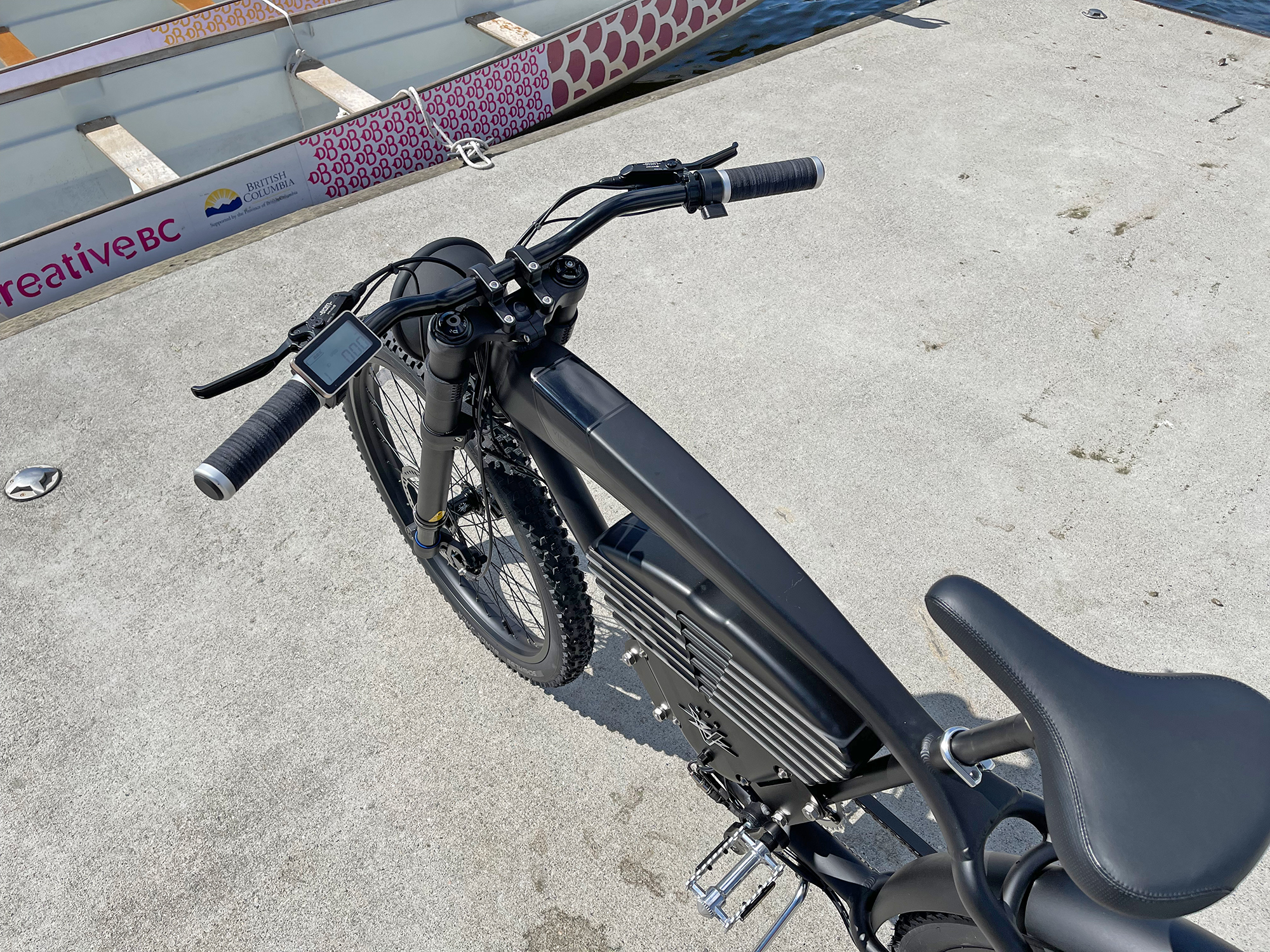
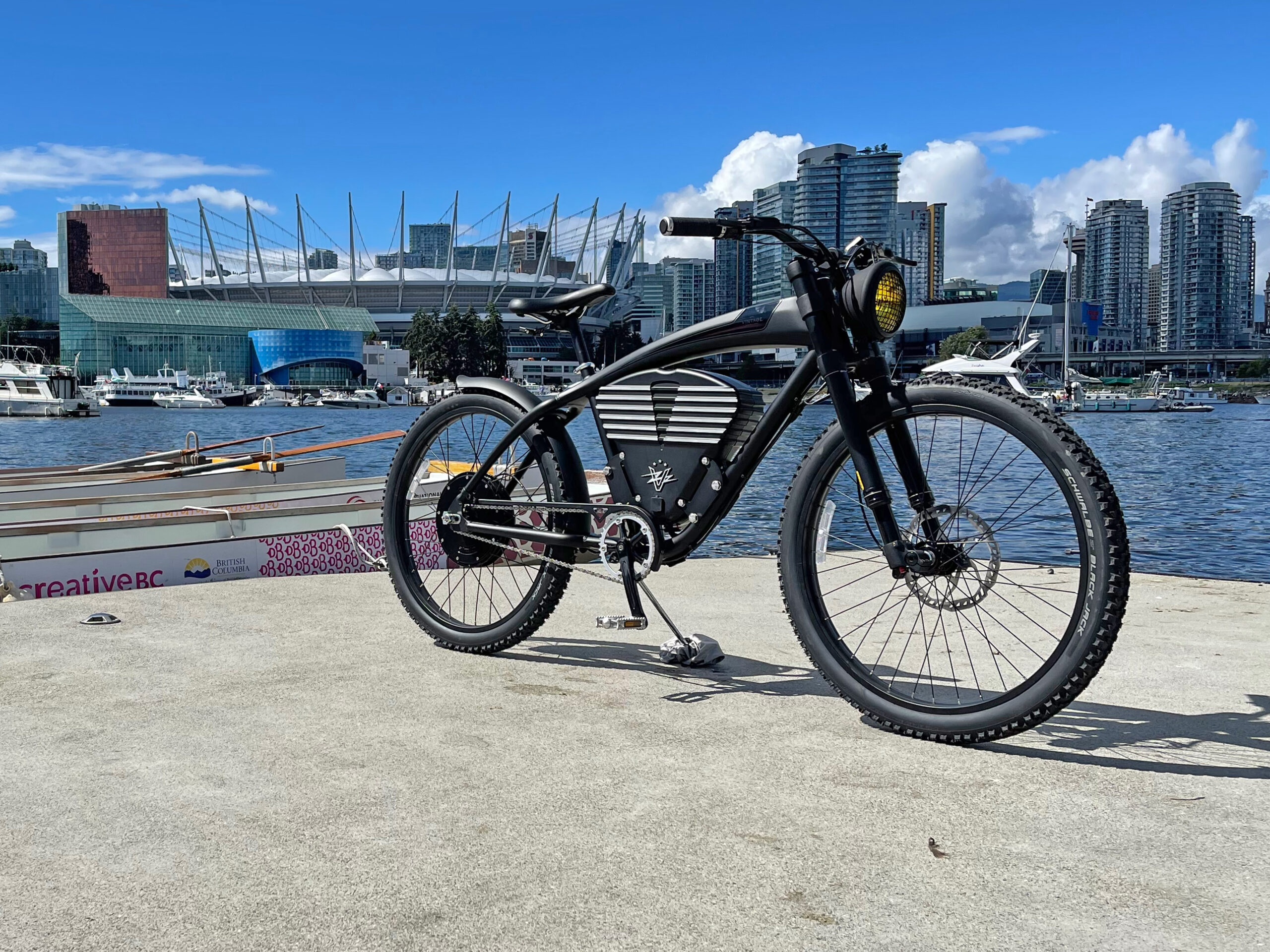
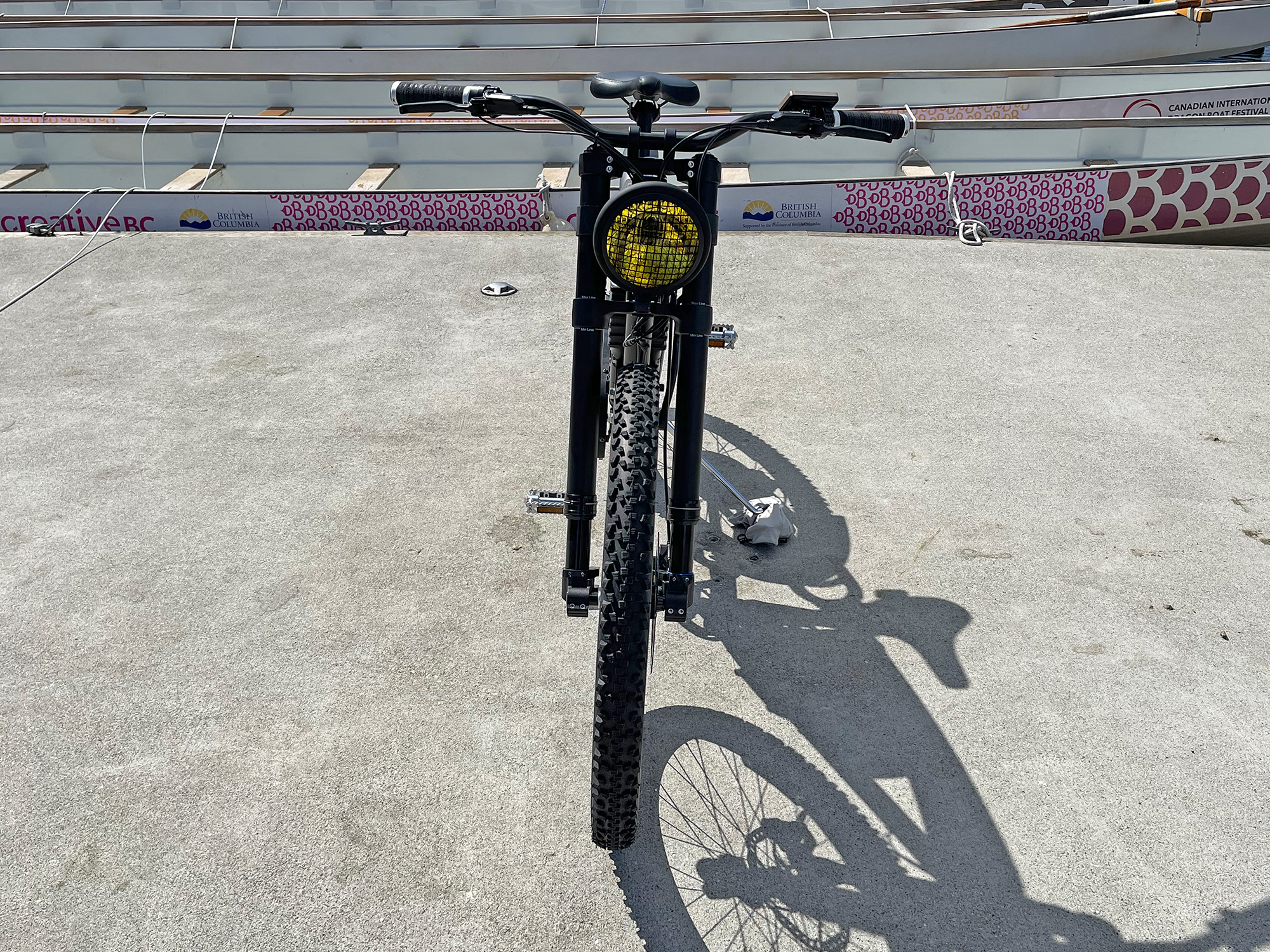

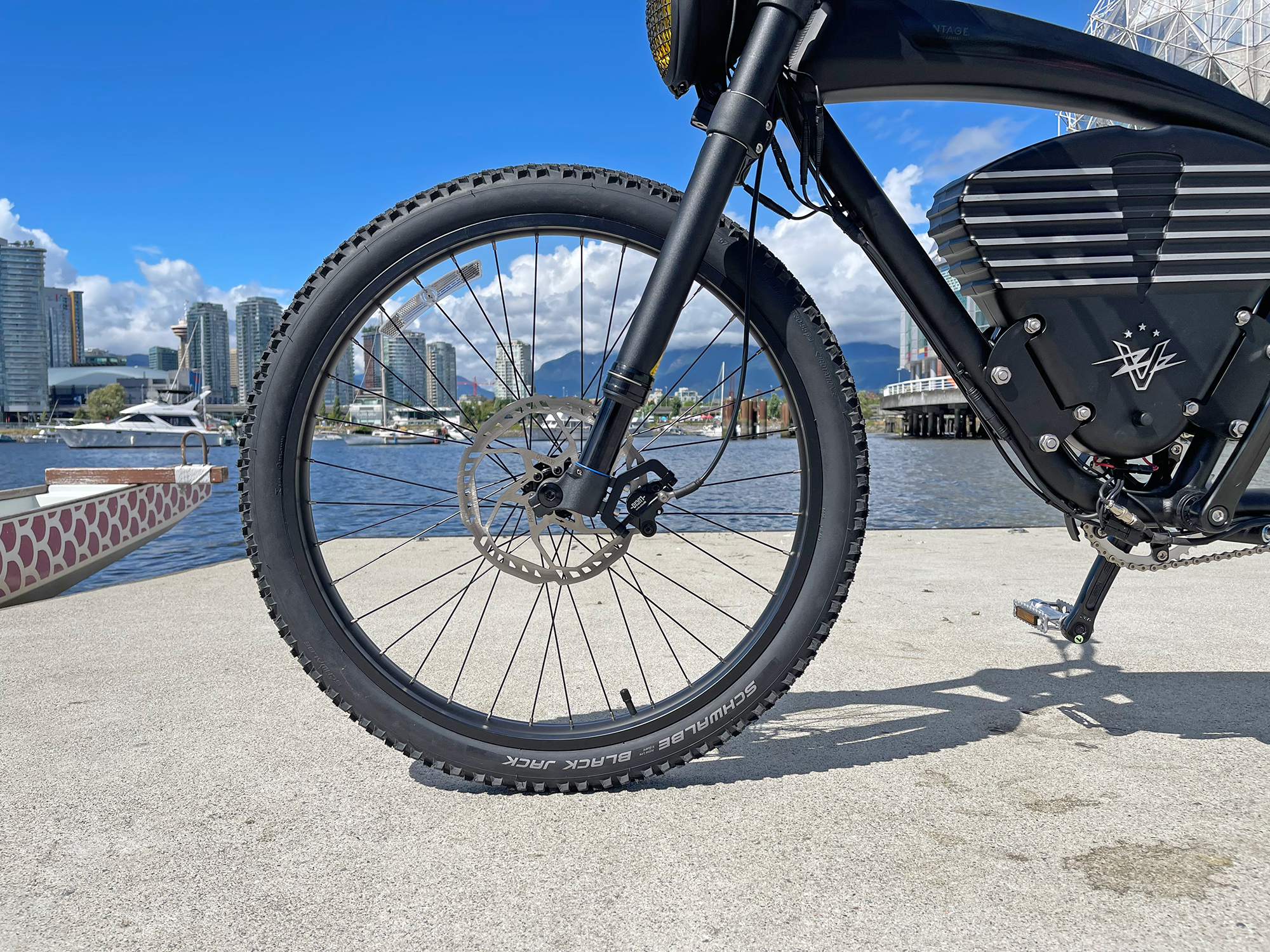
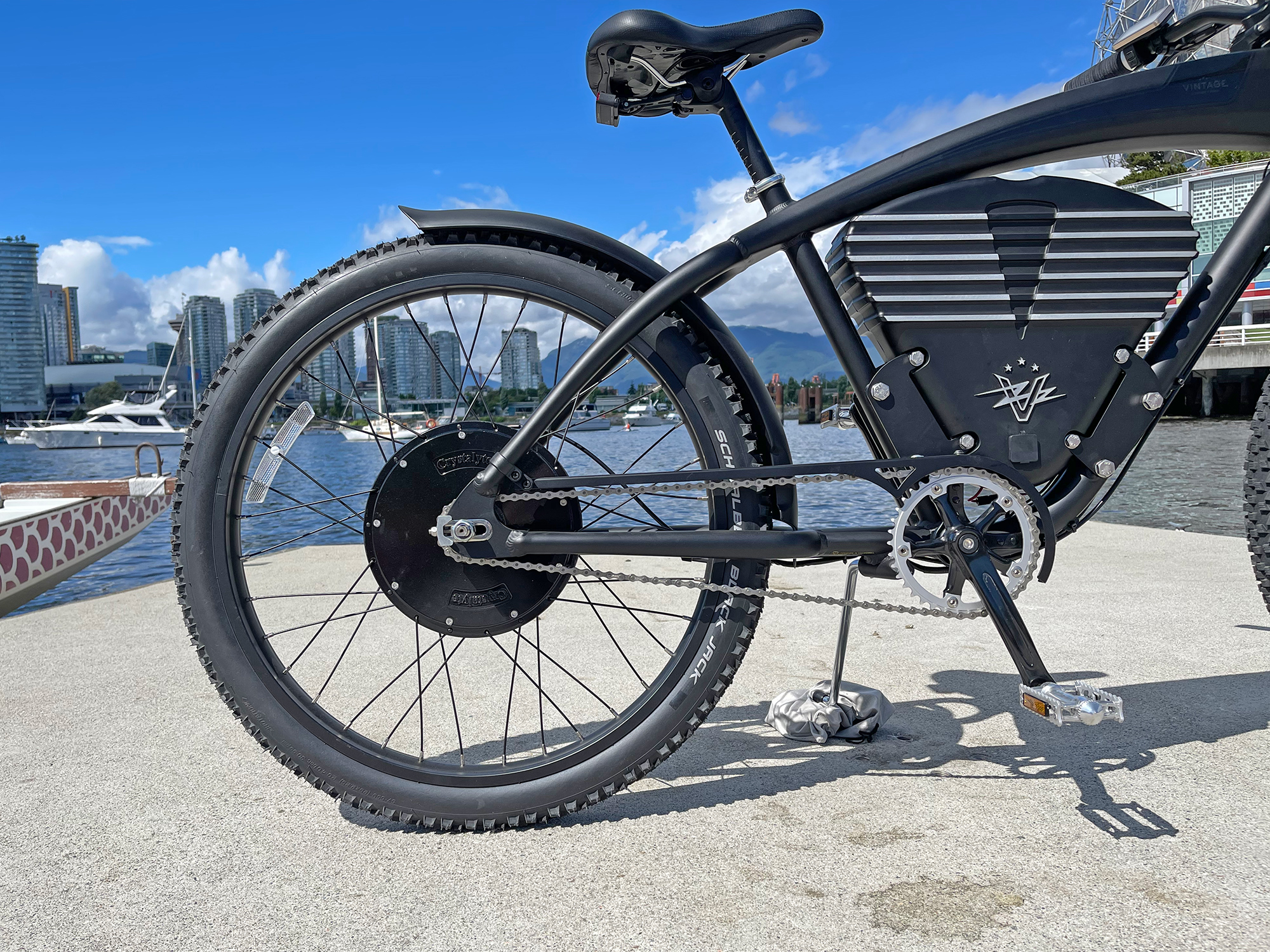
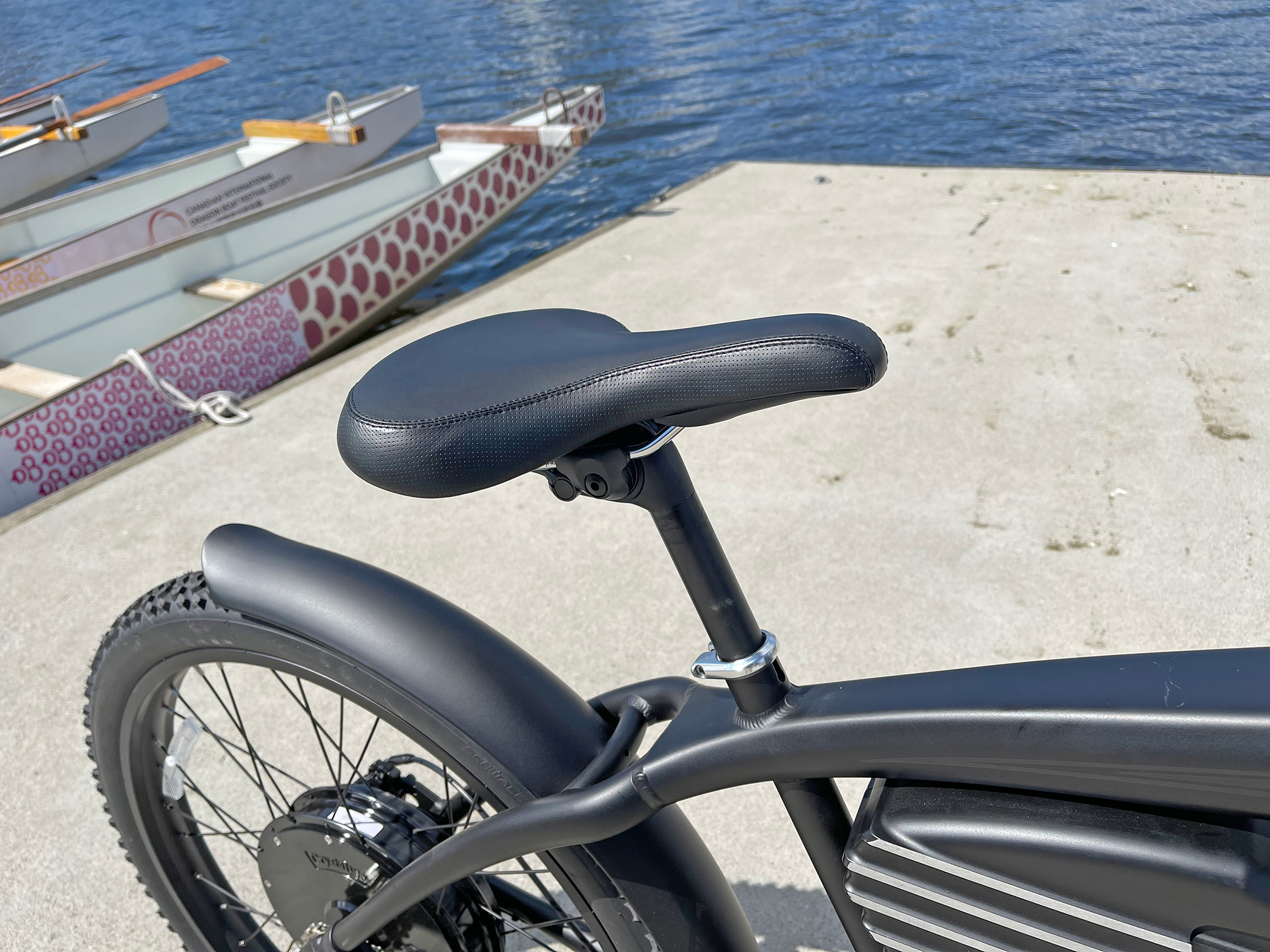

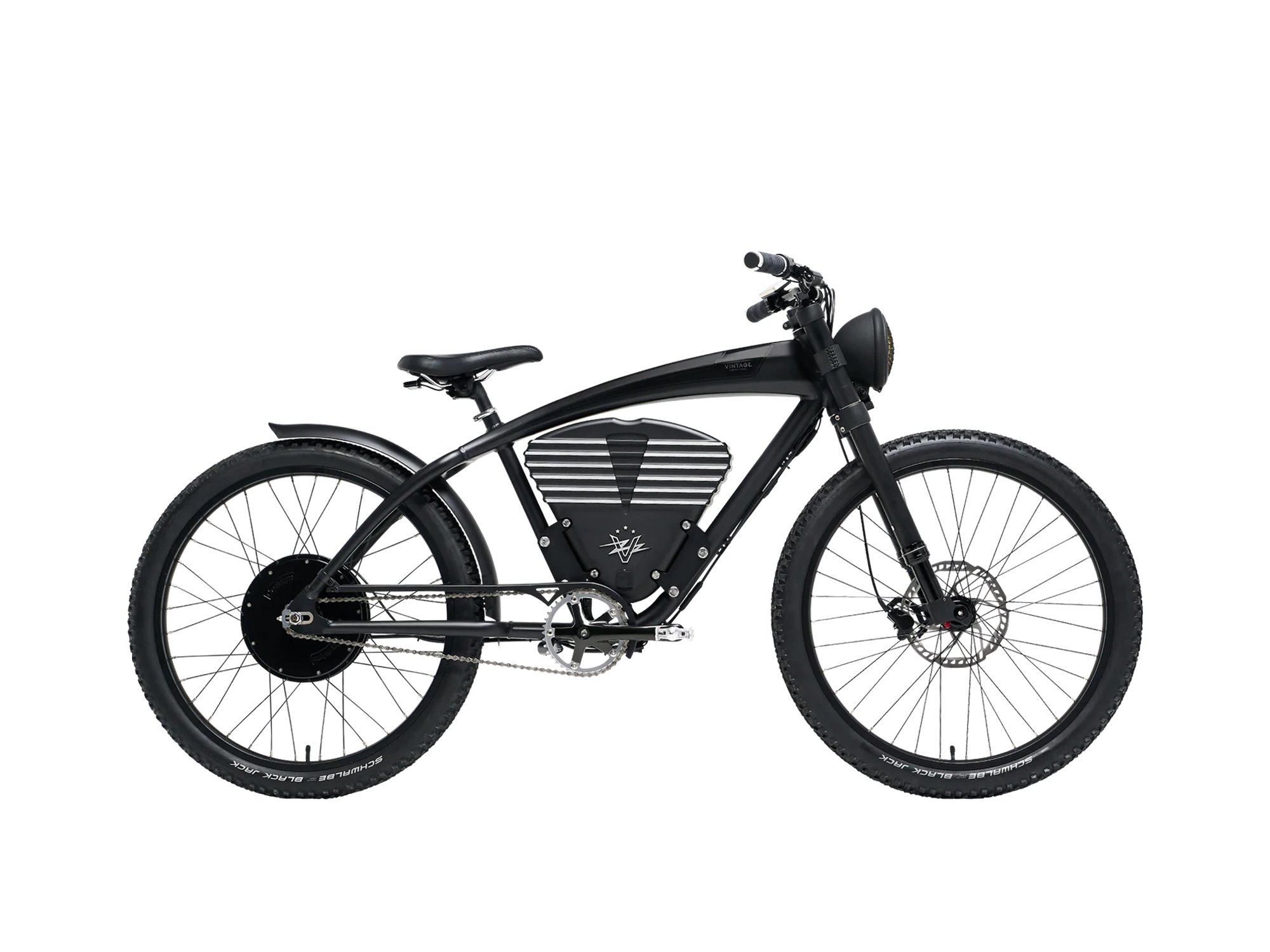

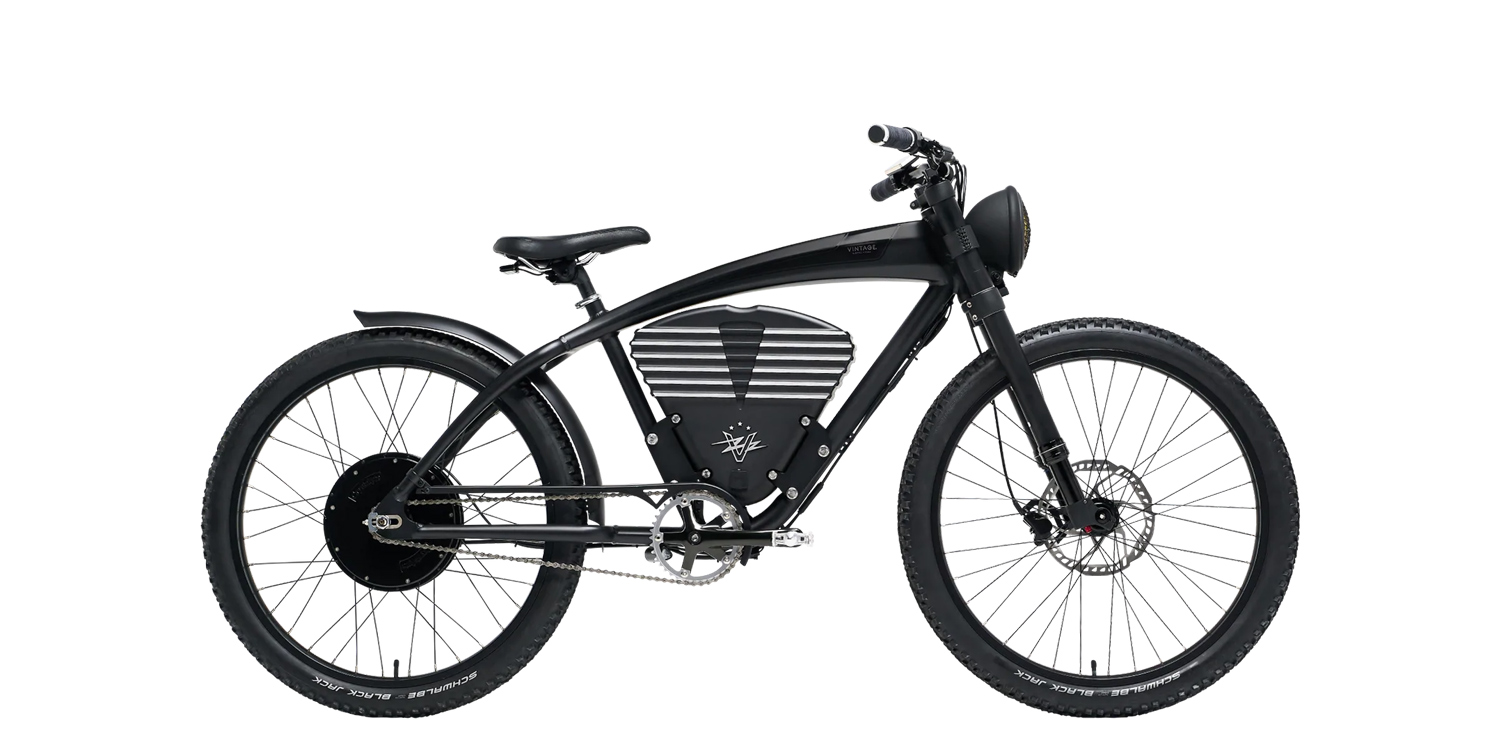

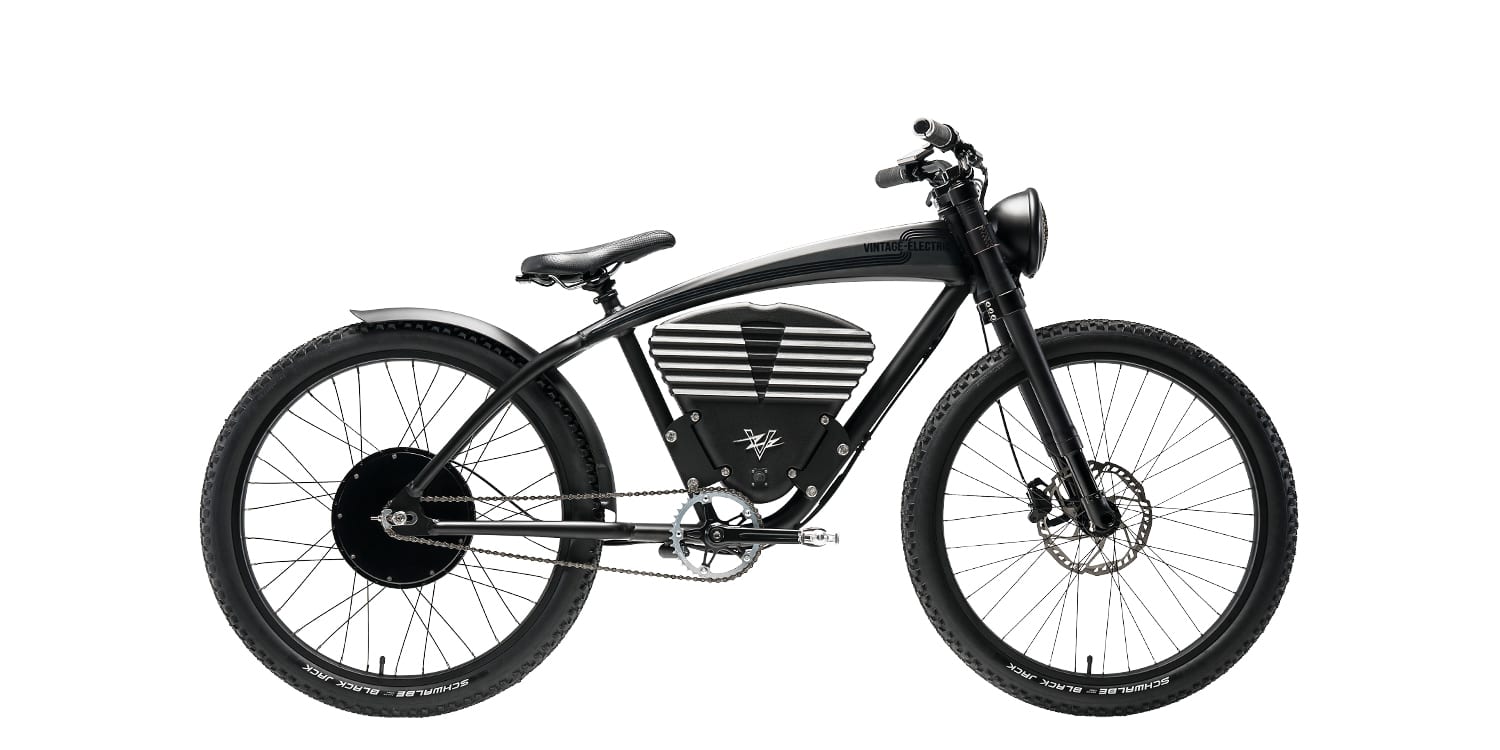
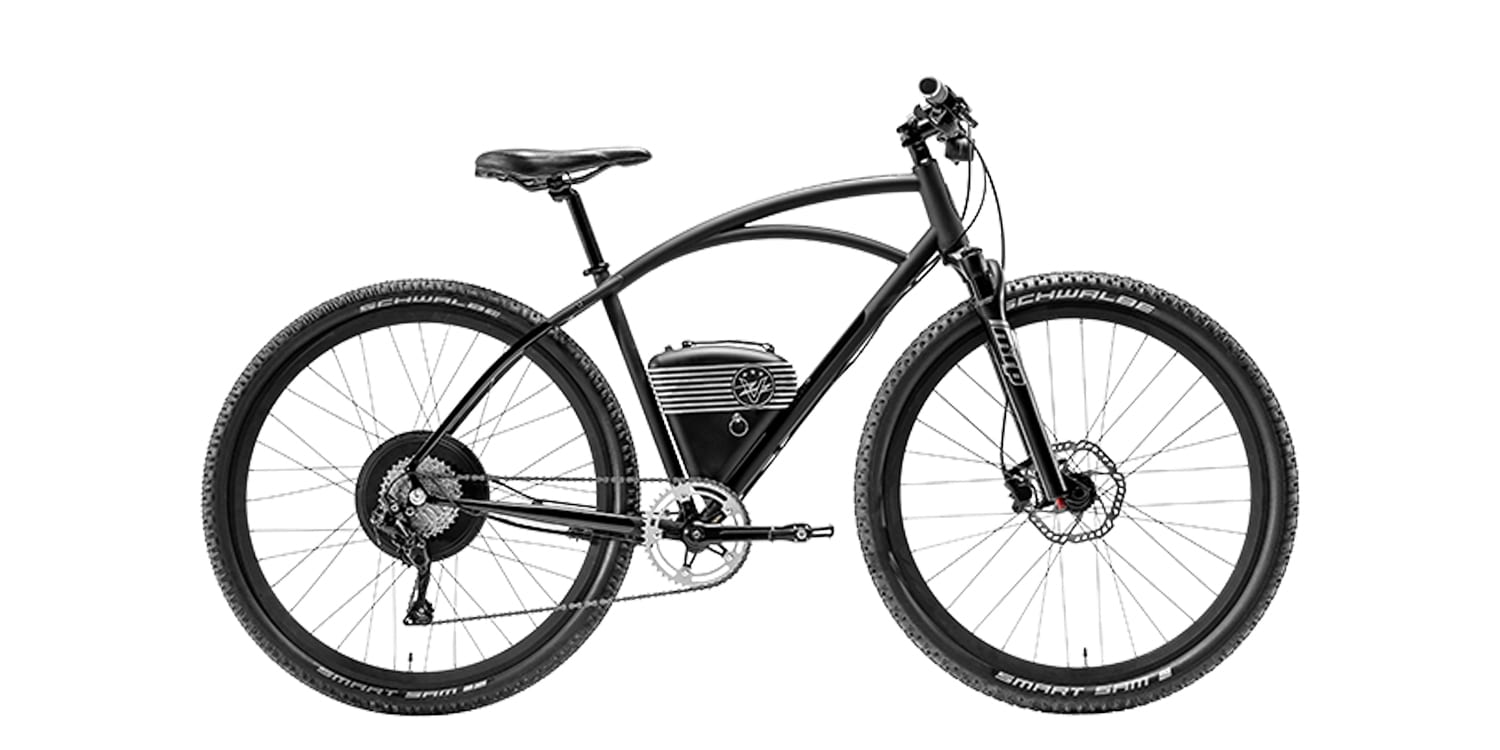
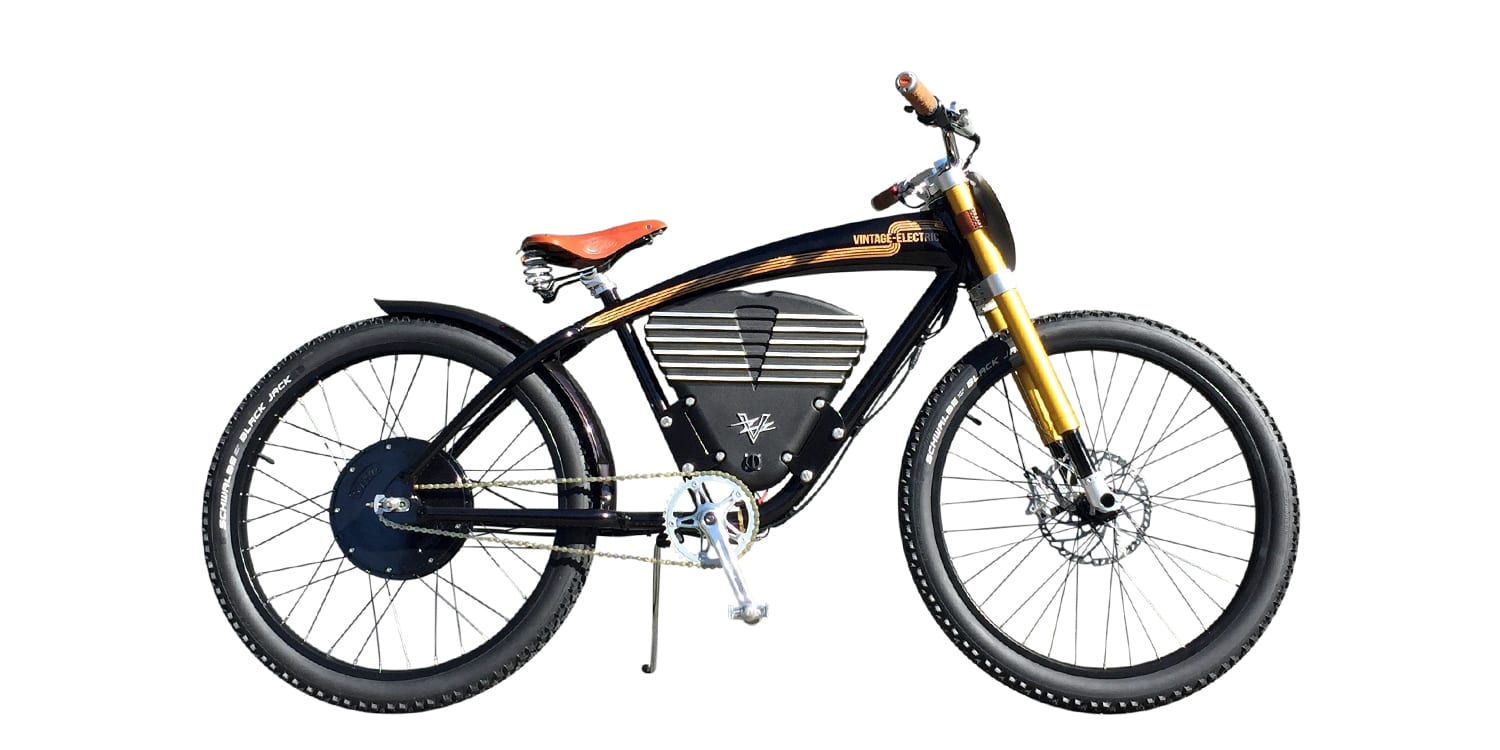
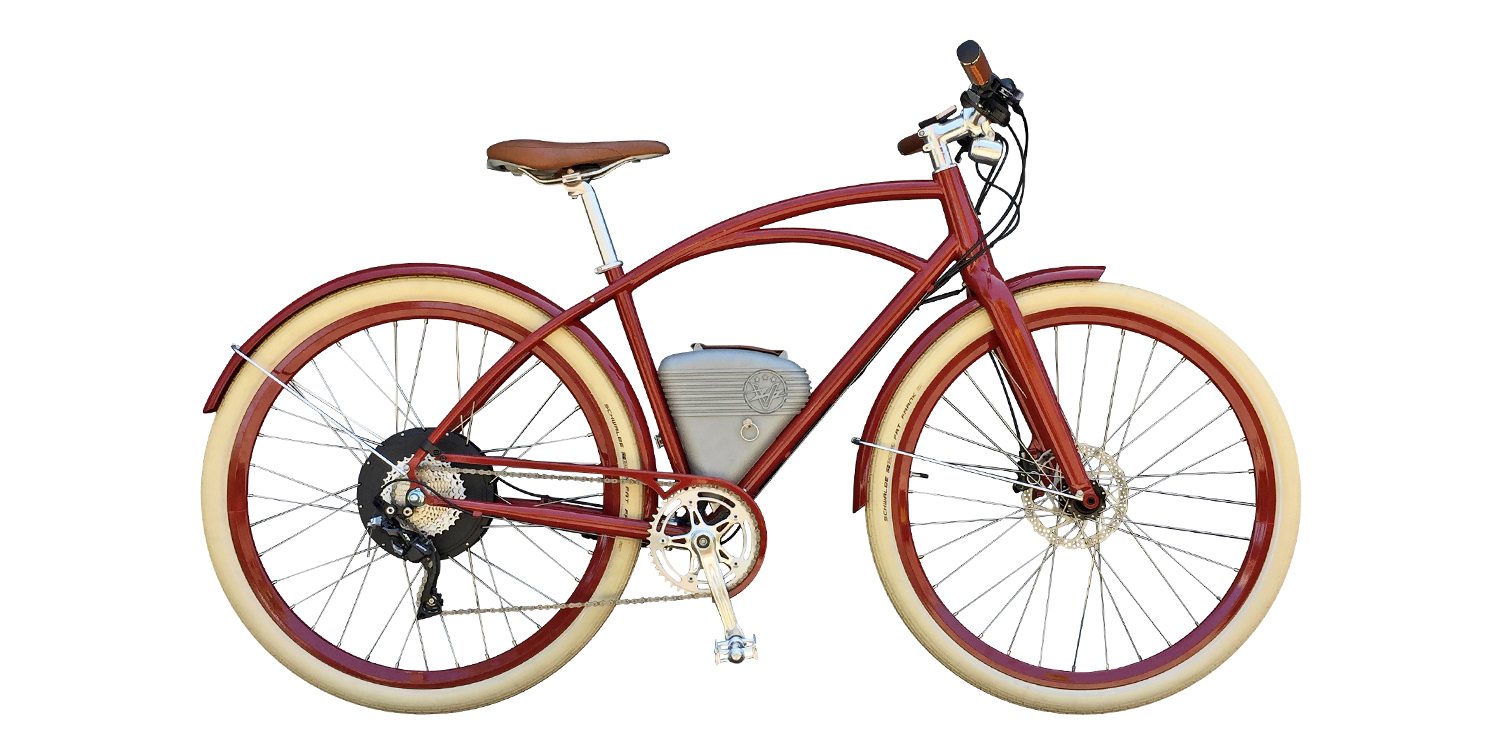
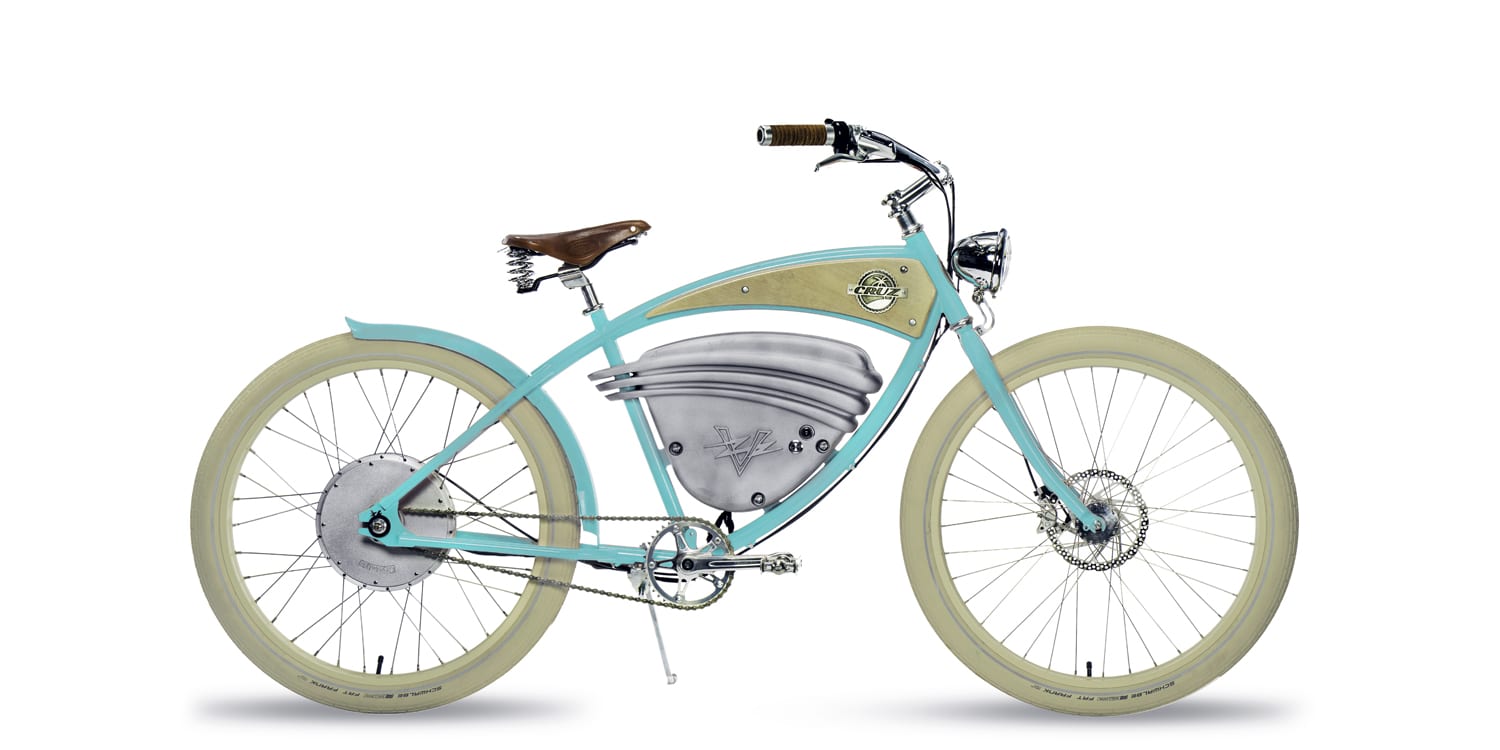
Joey says
So after paying $7000 for a bike, which is admittedly cool looking, they want to nickle and dime you $150 for a key to unlock it’s maximum potential? Otherwise, it’s just a $7000 bike that goes as fast as a $1500 one, with several more drawbacks? Even at 40 mph, there are better and less expensive options available.
Court says
I guess I’m getting confused about price as time goes on with inflation and ebike supply chains etc. etc., because this is the same price Vintage was charging in 2019… it actually came off as a pretty good deal when I first heard the price. Many ebikes are in the $5k range now, this one is very unique from a style and performance perspective. I can see how people would go for it, but to your point, it isn’t cheap ;)
John says
180 Newton meters can not possibly be correct.
Court says
Hi John, I realize it sounds like a lot… their last generation was like 85nm of torque. I asked the founder two times to specify the peak rating, and he said “it’s 3x” and that it was “180nm” so that’s what I put. As for the ride feel, it definitely offered power and was fun to accelerate with the throttle :)
Ken says
I’m likely missing it, but is there meant to be a video review for this bike (and the Cube, posted next)? IO don’t see the link.
Court says
Hi Ken! I just finished uploading the video so it should be visible now if you refresh. Sometimes I publish the writeup beforehand so I can take some screenshots to use in the video. Hope this helps and you enjoy it!
Ken says
It’s up for the Cube but not here, as yet :(
Court says
Thank you so much Ken! I had forgotten to add the link for the video. It is updated now, I appreciate you following up so I could correct this :)